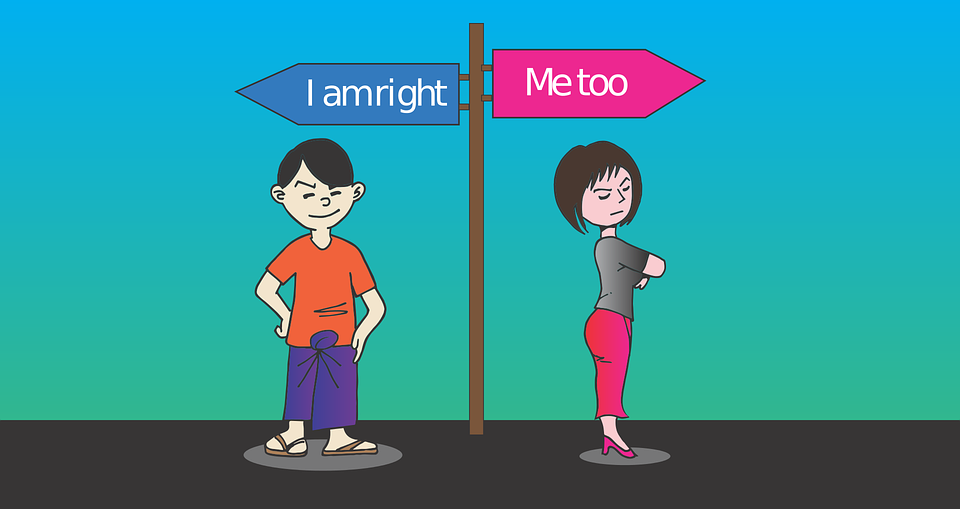If you are in the STEM areas like myself, you probably have been trained for a lot of years in analytical/logical thinking and thinking in a more academic way.
You maybe even been that way since you were a kid and that’s what got you in those areas in the first place.
The advantages of analytical thinking
If you spend some time having deep conversations with people from more of the arts/social sciences areas, you will notice that some concepts that are natural for you can’t be really understood by them.
Example1: if you try to explain the basis of the scientific method, you need to have an hypothesis, test that hypothesis, isolate the experiment variables and only change want you want to test, and see the results.
People that are not trained in the sciences probably couldn’t devise a simple experiment to obtain, even If not peer review and so on, some results based on that experiment to improve their personal life
Example2: you are trying to talk about statistical differences in a population, in humans for instance, and attribute certain characteristics to males that are more likely to have when compared to females.
So if you take 100 random males and 100 random females of a given population you will observe those differences. So you can have a macro/statistical view of people and can make certain predictions based on statistics.
People that can’t grasp that concept often times will say something like this: “oh but each person is an individual, you can’t assume the person is going to be like that”. And they would be right for an individual, not for 100 random selected individuals. They don’t understand statistics.
When you can think logically without emotions interfering, when you can apply the scientific method to your personal life, that is a tremendous advantage you have when compared to people that let their emotions dictate their decisions.
In the example1, if you are trying to go in first dates and see what is the best way of going about it, you would list the things that you are doing and experiment, over a large enough sample size, on just changing one thing to see if it makes a statistical difference.
Maybe you went on 5 dates and went with a very formal outfit and none of them resulted in a second date.
Then you only changed your outfit and did everything else exactly the same (in practice that’s impossible but let’s assume you did your best and it was close enough) and went on another 5 dates and 2 of them resulted in a second date.
Sure, from a purely scientific/statistical perspective, just 5 dates is not enough to be confident in the results, but you are not going to publish an article in a scientific journal, you are just trying to get more second dates, and for that this is good enough.
In the second example you saw an article, and let’s assume we trust the article and the source, that said that if you put your LinkedIn URL in your CV that the response rate when you sent the application for a job, doubled.
Well, having that data, you know that it is advantageous for you to do that.
Let’s also say that you are trying to get a specific job. You don’t know if the recruiters there have a higher response rate with the LinkedIn URL in the CV. But, from the data you know, you can extrapolate and make a reasonably confident assumption that in that particular case it is also going to work.
You don’t know if indeed it is going to work, but that’s not the point.
You trust the statistics and that’s all you need.

Disadvantages of “academic” thinking
Let’s say you were tasked in building a bridge. You had access to a template design of the bridge, so no prototyping is required, so it was just the building part you had to do.
In that case, because there is no need to fail since the design is already known, and because there are real serious consequences if the bridge fails, then thinking in a very academic way (checking everything by the textbook to make sure nothing fails) is a good thing.
You need to think about every possible failure scenario and try to anticipate that. You can also do a Failure Mode and Affect analysis to try to identify, classify, and take preventive measures to avoid accidents.
In an opposite scenario, let’s say you were tasked to make a simple software to collect date or a small machine. Something very specific and that hasn’t any template already made to follow.
In this case you would take a different approach: a more hands on, test-fail-iterate-test approach.
Because you have no way of knowing if the brand new design you made is going to work. It’s probably not. Not on the first or second try. You need to fail a lot.
There is a need to fail in a lot of areas. In academia you are trained not to fail, if you fail you don’t pass the class. You are trained to build the bridge.
However, in a real engineering environment, you need to fail.
If you don’t fail that’s because you haven’t done anything (unless we are talking about a very well known process that you are just repeating, not in a development environment).
So, in the real world, id you are doing a project or are tying to develop a skill, maybe social skills (link to article), you are in a development environment, you need to fail. You try the first version, it doesn’t work. Why? You identify the mistakes, and correct them, On the to second version: it doesn’t work also, but for a different reason. You change that and so on. It’s a iterative process, not like a test in university which is a one time thing.
The real world is not like university.
And without you even realizing it you are not being trained for the real world.
In my engineering classes I saw the difference between students that had extra curricular experiment in engineering teams doing real projects and those who didn’t. Those who didn’t did things not to fail, where, generally speaking, those who did understood the basics of trying, failing and iterating.
You need to understand that you have been formatted during all those years of doing tests in school, to not fail. That’s a good thing if you are building a real bridge with real consequences like people dying and are not in a development environment.
That’s not the real world.
Disadvantages of logical/analytical thinking
Now even if you eliminate the more academic thinking side of things you can’t eliminate the more logical/analytical thinking. Why? Because I think it’s an extremely powerful tool, and maybe you haven’t thought about being programmed in a negative way when it comes to academic thinking, but probably you have a good opinion about the more logical/analytical side.
I too have that opinion as I mentioned before.
However
like any other tool it has it’s limitations and can’t be applied everywhere.
If you had any serious argument with a girl in a romantic context, you maybe have already realized that using logic won’t work. She will just get more mad at you. Even if you are correct and are making a logical argument. But why?
If someone is “thinking” with their emotions using logic on them will have no effect and often times a negative effect.
Jordan Belfort (the wolf of Wall Street) talks about in making a sale part of it is the “emotional sale”. Yes the product needs to be good, and the person needs to afford it and so on. That’s the logical part. But that’s not the only thing that matters.
If the buyer personally hates the seller then nothing logical he says is going to make a difference.

Conclusion
You have probably been trained all your life, if you are in STEM, to think in a academic and logical way.
Thinking in a academic way (in terms of not failing the test, not in terms of applying the scientific method)), outside of a few particular cases like if you are a scientist doing a lab experiment, is probably detrimental to you.
Having the ability to think logically and not let your emotions dictate you decisions is an extremely powerful tool, but can’t be applied everywhere.
You need to realize the limitations of the training you have received.
Keep the good parts, eliminate the detrimental ones, and understand when and where to apply them.

